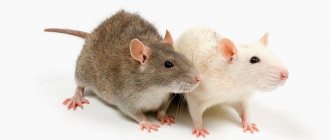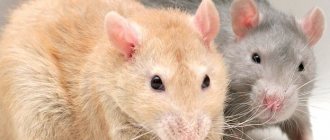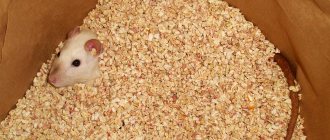However, if the desire to get a pet comes only from a child (even if he is already quite old and independent), then think about how ready you are to get involved in the care. Due to their age, children are not able to fully care for an animal, and schoolchildren may eventually lose interest in a new friend, especially when it comes to morning walks with the dog or cleaning a rodent’s cage.
This does not mean at all that in such cases one should abandon the idea itself. But if you, as a parent, understand for sure that there is no one in your family to walk the dog, then you should choose another animal whose care will be comfortable for you.
It is also important to wait time and figure out what caused the child’s need to have a pet - a feeling of loneliness, a desire to take care of someone, or imitation of a friend who already has a cat, turtle or fish. Tell your child in detail about the nuances of communicating with animals and the future responsibilities that he will have to perform.
At what age is a child ready to take care of an animal?
According to psychologists, it is best to get a pet when the child has already started school, that is, at 7–8 years old. Until the age of four, a child will hardly be able to consciously interact with a pet. Small children can accidentally harm the animal or get hurt themselves. In addition, the baby is not able to fully care for his new friend. After five years, you can already trust him with the simplest manipulations under your control: feeding the fish, cleaning the cage.
An important point that must be taken into account initially is the possible death of the pet. This is especially true for small-living rodents and aquarium fish. Children 6–8 years old are already able to understand what death is, and it is easier for them to explain that the passing of an animal is a natural process.
Hamsters
Hamsters.
Photo: pixabay.com Watching this pet is a real pleasure. He runs funny in a wheel, eats treats on both cheeks and sleeps curled up into a ball.
Pros: quickly become attached to people and become tame.
Cons: very small, you need to make sure the cage is locked. If he runs away, it's hard to catch him. Needs bathing and claw trimming. Leads a nocturnal lifestyle. He sleeps during the day and makes noise in the evening. Doesn't live long.
If there are children at home: it is better not to have one if the child is under eight years old. The hamster may not survive active play. It is also capable of biting if the child presses it tightly to itself.
Where to put it: for dwarf breeds, the cage should be at least 30 by 50 cm, and for Syrian breeds - 40 by 60 cm. The cage should have a house and a running wheel, you can put various steps to make it more interesting for the animal to run.
What to eat: solid grains (wheat, oats, millet), seeds and nuts can be given as treats.
Varieties: the most common for keeping a home are dwarf (Roborovsky and Djungarian), Syrian.
| Weight | dwarf - 50 g, Syrian 100-200 g |
| Body length | dwarf 5-10 cm, Syrian - 12-18 cm |
| How long do they live? | 2-4 years |
Does your health allow you to have a pet?
It will be a great shame to give up an animal that is already loved by everyone because one of the family members has developed an allergy. And it can be caused not only by animal hair, but also by dry fish food. If there is already an allergy sufferer in your family, especially if it is a child himself, it is worth taking allergy tests. Any animals are undesirable for people with bronchial asthma and certain skin diseases.
More exotic options
Iguana, chameleon, snakes, turtles
Reptiles are suitable for those who have limited space, but not limited finances. They are quite difficult to care for and are more suitable for those who want something exotic rather than a friend. They will allow themselves to be stroked and scratched, but you should not hope for affection.
Ferrets, raccoons, foxes and other wild animals
Extremely attractive. But still, they should not be considered completely domesticated. Their behavior is less predictable; if a pet becomes ill, it is more difficult to find a qualified veterinarian.
aaron007/Depositphotos.com
How to choose an animal by temperament
When choosing an animal, you need to start from the character and temperament of the child. Active children will be bored with calm rodents like guinea pigs, birds, and fish. For a phlegmatic child, on the contrary, watching an aquarium can become exciting entertainment, and walking with a dog can become a daily chore.
Consider your preferences too: how much time you spend at home, whether you need company at this time, etc. For a housewife or a remote working mother, living next to a cheerful terrier can be a real challenge.
Ferrets
Ferrets.
Photo: pixabay.com Strictly speaking, ferrets are not rodents - they belong to the mustelidae family. These are playful and restless pets. While you are not at home, they feel comfortable in a cage, but as soon as you come, they will need to be played with. The more you exhaust him, the calmer the night will pass.
Pros: you can get one if you have cats or dogs at home. Ferrets are friendly and will get along with other pets.
Cons: They emit an unpleasant odor if you scare them too much. If you let him out of the cage, they can organize a hiding place where they will carry things that are not lying around the house.
If there are children at home: get young ferrets from two months of age. Do not allow children to bring it close to their face, the animal may bite.
Where to put it: the cage should be no less than 60 by 80 cm. You need to put a house and a hammock in it, as well as put various rags and shreds. You cannot keep your pet locked up all day; you should let him run around the apartment for 2-3 hours, after closing the door to another room and removing or protecting valuables, as well as medicines, household chemicals, wires and anything that can be chewed. The second option is to go outside with him; the animals can be walked on a harness.
What they eat: specialized food. Another option is to give natural products: turkey, rabbit, chicken, beef. In this case, you need to add eggs, cottage cheese, and kefir to your diet.
Variety: ferret (domesticated species of steppe ferrets).
| Weight | from 700 g to 2 kg, males are larger |
| Body length | up to 45 cm |
| How long do they live? | 8-10 years |
How and who to choose as your first pet
If there is no specific request, choose your future pet together. If the child has a clear desire, understand the breeds of the animal (even hamsters have them) to choose the most suitable one for your family.
You definitely shouldn’t choose an exotic animal as your first pet – a snake, a chameleon, etc. Ferrets and raccoons, which are popular today, also require specific care and have a very capricious character. Therefore, it is best to focus on classic pets: rodents, fish, birds, cats, dogs.
Domestic rodents
The hamster is considered the most popular pet from the rodent family.
. Hamsters, like cats and dogs, have many breeds that differ not only in appearance, but also in temperament. For example, Djungarian hamsters are very active and need constant entertainment, while Siberian hamsters are calm and slow. Also, when choosing a breed, you need to take into account the sociality of hamsters: Dzungarian hamsters can live only one at a time, but Campbell's hamsters need company.
In general, all hamsters are predominantly nocturnal and can be tamed quite easily. Caring for them is relatively easy. However, buying a hamster for a very young child is not the best idea. Firstly, a baby can injure such a tiny pet, and secondly, hamsters rarely live longer than 2–2.5 years.
Decorative rats and mice also do not live long
. Playing with a rat is, of course, more interesting: it can be taught various tricks, for example, running from shoulder to shoulder or giving a paw. Rats have a fairly high intelligence, which, however, is also a negative quality, because they are quite inventive, easily escape from cages, and when released into the wild, they damage property. Finding an escaped rat in an apartment can be difficult.
Snake
The animal attracts with its exoticism, but few people would want to keep a reptile at home. Snakes delight some people and become objects of reverent love for them, while others are disgusted or terribly frightened. And this fear is well founded: purchasing poisonous snakes is not something to joke about.
It is best to opt for safe reptiles, such as:
- corn snake;
- royal python;
- rainbow boa constrictor;
- imperial boa constrictor;
- patterned runner;
- king and milk snakes.
All these types of snakes are not aggressive and are completely safe even for beginners.
To keep such a pet comfortably, you only need a terrarium, which can be used as an ordinary aquarium equipped with an incandescent lamp. The last condition is mandatory, since snakes are cold-blooded creatures and a constant source of heat is vital for them. Also, a layer of soil or sand should be placed on the bottom of the aquarium.
Pet snakes need regular hydration: the pet’s home is sprayed, and a drinking basin with cool water is placed inside, which is recommended to be changed every day.
If desired, you can place several branches in your pet’s “house”, along which the snake could crawl freely, enjoying its leisure time. And when miniature vines appear in the terrarium, your creeping pet will be delighted, because snakes love to swing on branches, even if they do it slowly.
You can feed your snake chicken or quail eggs, but it is also recommended to pamper your creeping pet with more delicious dishes:
- lean beef;
- chicken;
- pieces of fish;
- snails without a shell.
A snake raised in captivity is gradually accustomed to these delicacies. Wild reptiles prefer insects, small rodents, lizards, birds, toads, and earthworms. It is best to give your pet frozen food, and defrost it in air and dry it before feeding it directly.
Young snakes are fed once every 3-4 days, and adults - once a week. During the molting period, as well as when changing habitat or owner, the animal can “declare” a long hunger strike (up to several weeks).
Dog
Most parents are stopped by the need to walk the dog at least 2 times a day. But if you seriously expect that a pet will change your child’s life for the better - make him more responsible, relieve emotional stress, help him learn compassion, then in this sense the dog will leave all other “competitors” far behind.
The level of psycho-emotional development of a dog is so high that a small person can easily find a common language with it. At the same time, if the dog is properly raised, then its obedience and devotion to the child will certainly awaken in him such qualities as self-respect and self-confidence. Of course, you will have to make some efforts for this, under no circumstances leaving the training of the puppy to your son or daughter.
Another significant advantage of dogs is their relatively long life span - for about 15 years, your child will have a loyal, affectionate and vigilant (which, alas, is important in our time) friend next to him!
Rabbit
These popular pets are well suited for young children, as long as they are supervised by adults. Rabbits have an affectionate, sociable nature and, usually, larger breeds can be especially friendly.
To prevent any aggression, it is advisable that all rabbits be sterilized. This is especially important if you want to keep multiple rabbits in the same space. A rabbit can live from 8 to 12 years and is easy to care for. Proper nutrition is very important to keep the animal healthy: grass hay, rabbit pellets and vegetables.
Fish
Many parents believe that an aquarium is the ideal solution to the problem. And the living creatures appeared in the house, and the child’s request was satisfied, and the house was quiet, and no one disturbed the cleanliness and order. But you should still take into account that it is necessary to clean the aquarium at least twice a month, otherwise the fish will feel bad and the apartment will have an unpleasant smell of rotten water. In addition, fish are fragile creatures and, if abandoned by their owners, they easily get sick and die. There is one more point: a child, alas, will not be able to play and communicate with swordtails, goldfish and the like. And it is more difficult to form an emotional attachment to such pets.
Another thing is that for hyperactive children suffering from attention deficit disorder, psychologists strongly recommend having an aquarium with fish: the calm multidirectional movement of the fish has a beneficial effect on the child’s psyche. And adults will also benefit from contemplating an aquarium: for example, scientists have proven that if you watch swimming creatures before visiting the dentist, the level of anxiety and even pain will be much lower!
Cat
Children love cats very much and often ask for a kitten. While he is small, the baby is interested in playing with him. He will carry it with him everywhere and even sleep with it.
Why you should get a cat:
- unpretentious in care;
- no need to take him for a walk;;
- you can rarely bathe;
- affectionate animal.
Minuses:
- wool sheds;
- scratch furniture;
- marks territory;
- prevention against parasites is necessary;
- may harm the child.
Cats need a place to rest and toilet. The animal must be trained to go to the litter box, otherwise it will cause a lot of trouble.
You should not get an animal for a child under 5 years old. He must follow the rules of hygiene - always wash his hands after playing with the kitten.
It should be noted that when the cat grows up, she will not be interested in playing with the baby.
Gerbil
In Latin, the name of this small animal sounds like Gerbillinae.
This little one is often confused with domestic mice - they are really very similar in fur and body structure, the only difference is in the length of the tail. They began to be domesticated only in the mid-20th century; the Mongolian species became very popular. Their homeland is steppes and semi-deserts. The animal has a body weight of about 150 grams. It can reach up to 20 centimeters in length. Fur color varies from bright yellow to dark brown. Gerbils feed on grain and grass. The animals themselves are social - in captivity it is better to find a mate for your pet.
Video with a pet gerbil.
Mini pig (dwarf pig)
In English the animal is called Pygmy hog.
Another exclusively decorative miniature species, bred specifically for home keeping. Their breeds vary greatly. For example, the Majalino breed barely reaches a weight of 9-13 kilograms, and a pot-bellied mini-pig can easily gain a whole centner. Their ancestors are considered to be the small Vietnamese pig. Mini pigs are distinguished from their ordinary counterparts by their special cleanliness and are easily toilet trained. The diet is quite simple and includes bread, dairy products, vegetables and fruits.
From the video you will learn how a miniature dwarf pig lives at home in a city apartment.











